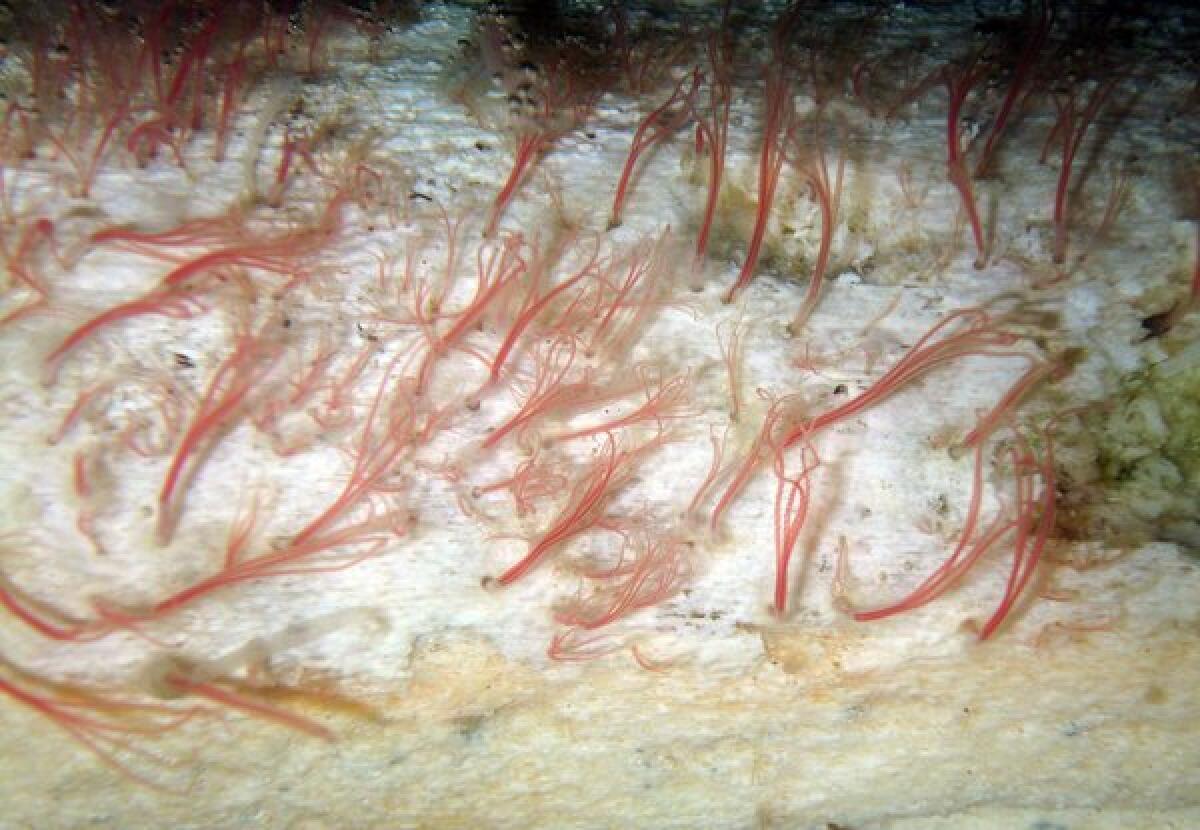Tiny sea creature devours whole whale skeletons

They’re the tiny recyclers of the ocean floor -- voracious, pink-plumed worms that devour entire whale skeletons, then scatter their eggs to the current in hopes that offspring will find new bones.
The creatures, which were first discovered off California in 2002, in waters more than 1.5 miles deep, are so alien that biologists weren’t sure initially that they were worms. They lack mouths and stomachs and the male worms are so tiny they spend their lives living inside the larger females.
And, as if that weren’t exotic enough, scientists named one variety of worm Osedax mucofloris, or “snot-flower bone-eater”
Now, in a study published in the Proceedings of the Royal Society B, scientists have identified two new species of Osedax in the ocean depths off Antarctica.
In an experiment designed to study the fate of whale carcasses and sunken ships in the frigid ocean, marine biologists sank crates of bones and pine planks for a year and then hauled them to the surface.
Unlike sunken wood in nearly all other oceans, the pine planks were not damaged by wood-boring mollusks and were considered to be “pristine.”
The whale bones were a different story however, according to lead study author Adrian Glover, a marine biologist at London’s Natural History Museum.
“Every whale bone recovered ... was covered in a thick pink-colored ‘pelt’ of Osedax,” wrote Glover and his colleagues.
Female Osedax can measure an inch or two long, and bury much of their bodies in the whale bone. However, long, reddish feathery plumes remain exposed to the sea and act as gills as they wave in the current.
The creatures do not have mouths, but they do come equipped with friendly bacteria that help break down oils and proteins in the whale bones.
The two new species, which were hauled up from the West Antarctic Peninsula continental shelf, were named Osedax antarcticus and Osedax deceptionensis.
Well over a dozen species of Osedax have been documented since its first discovery, and study authors suspected that they would find them on the Antarctic seafloor, because the region has some of the highest seasonal concentrations of whales in the world.
Study authors wrote that there were two likely reasons the wood was left unscathed by wood-boring bivalves.
First, Antarctica has been absent of trees for at least 30 million years, and the only wood that sinks to the seafloor there comes from sunken ships or waste. Second, authors hypothesized that the currents that circle the continent form a barrier to drifting larvae.
Those observations would likely be of great interest to marine archaeologists, according to study authors.
One of the ships that sank there is the Endurance, the Scandinavian pine and oak vessel used by Ernest Shackleton in his 1914 polar expedition.







